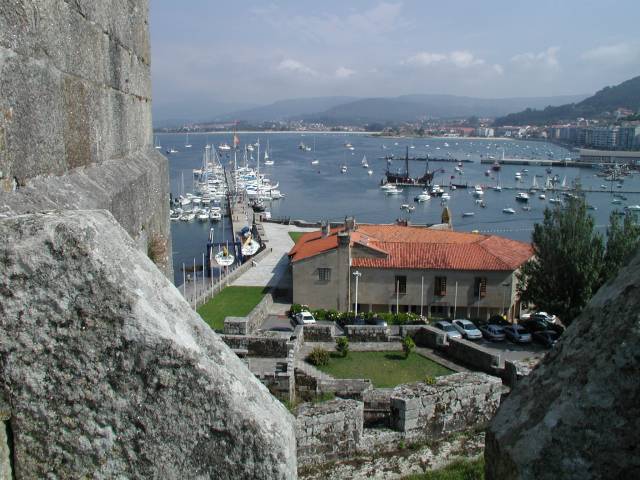Galicia, Spain
6th - 31st August 2001
Our landfall in Spain was at La Coruņa on the evening of Monday 6th August 2001, after five days at sea. We were tired, dirty, hungry and ready to go ashore but found the anchorage very crowded and no-one at the marina responding to the VHF, so we decided to drop the hook in the anchorage off the two yacht clubs. After a quick dinner, whilst watching the chaos when a French boat with nobody aboard, which was anchored only with rope on a very large scope, swung on its anchor into one boat after another in the crowded anchorage, we crashed out.
We were rudely awoken in the early hours of the morning when the aforementioned French boat swung into ours! No damage was done but we must have looked quite a sight on deck in our nightwear with the excited French Captain leaping around on his deck shrieking, "Zis is not good, zis is not good!"
We decided our safest option was to re-anchor at the back of the anchorage where the depth was around eighteen metres, prompting us to visit the chandlery at the next opportunity to augment our stock of anchor chain aboard. It seemed we arrived on a particularly busy day and never saw the anchorage as crowded again.
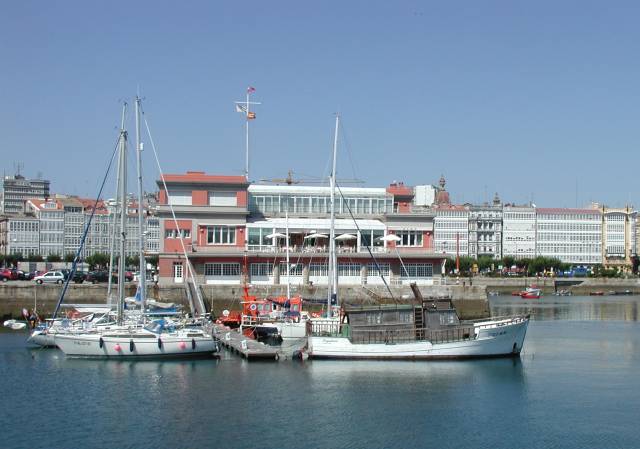
Anju well-hidden at Real Club Nautico, La Coruna.
The next day, the yacht club relocated us to the very swanky Real Club Nautico in the city centre, where they found us a space on the pontoon. The club was so posh that they didn't really want to have anything to do with scruffy sailors, except of course for collecting their mooring fees! It was definitely more of a social club without any real facilities for visitors, unless you wanted to hold a black tie function. We did make sure that we used their posh toilets as often as possible and regularly hung out our laundry because they disliked it so much! Sophie became a very close friend of the night-watchman, during her nocturnal visits ashore!
La Coruņa was a bustling city and we were conveniently close to the centre. Apparently there was a on-going fiesta, with events every night, although no-one seemed to know what was planned or where, which was very strange. One night, however, there was a spectacular firework display with a noisy re-enactment of some famous battle or other. We never did work out who was fighting who or why, but the fireworks were great. Sophie, however, did not approve.
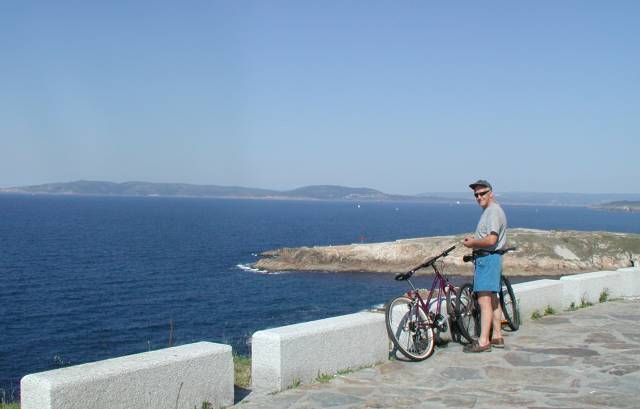
Phil pondering our next move!
There was a great cycle track all around the sea front in the city, which was probably a good idea on witnessing the local driving style. The only snag was that the kamikaze pedestrians were almost as much of a danger! We cycled up to the "Torre de Hercules", which was the oldest working lighthouse in the world.
Before leaving La Coruņa, we took a trip by train to the cathedral city of Santiago de Compestela. Our visit was dampened a little by continuous heavy rain and after a quick tour around the famous, crowded cathedral, we adjourned to a local hostelry for lunch. Having earlier discovered that the most economical way to order lunch is to select the "Menu Del Dia", or set three course menu of the day, we managed to draw out our meal until the rain stopped and sampled the famous local dessert, named after the city.
Our next port of call in Galicia, Camariņas, was an unexpected pleasure. We hadn't planned to stop there but during our overnight passage south from La Coruņa, the weather forecast suddenly predicted force 8 gales from the south, so rather than heading on around Cape Finisterre, we selected the almost as terrifying option of heading into an unknown port in the dead of night.
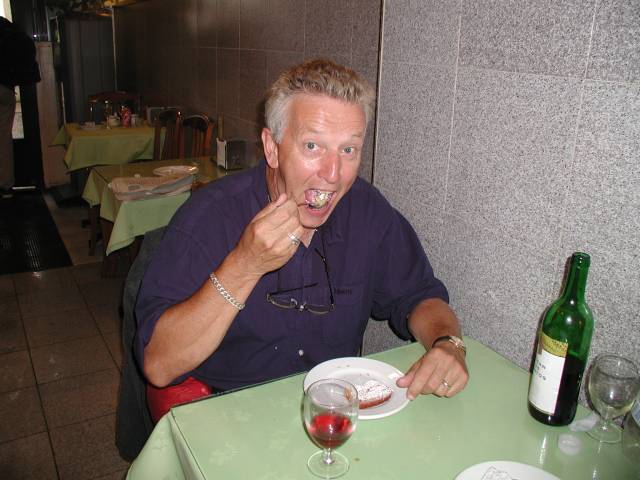
Phil tucks into a local tart!
This option was not without its perils as we had to weave our way through a mixture of brightly illuminated fishing boats, seemingly skippered by psychopaths intent on collision with a twenty ton steel boat and numerous tiny, unlit fishing boats in the entrance to the harbour. We later learned that the local fishermen are often unfriendly to yachts and take delight in motoring at high speed through the anchorage, as close as possible to anchored boats.
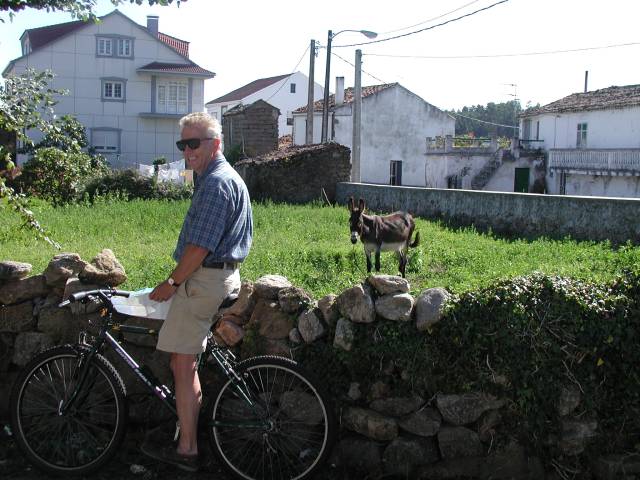
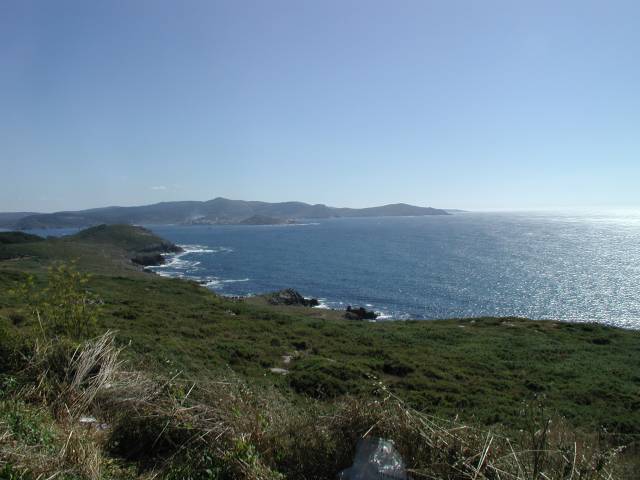
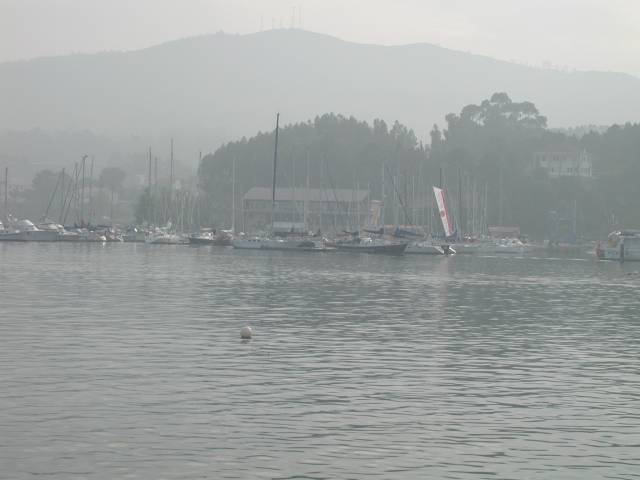 Foggy Portosin
Foggy Portosin